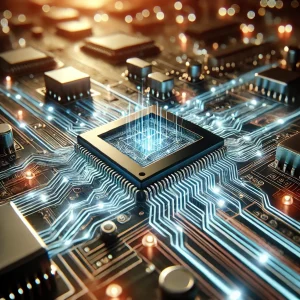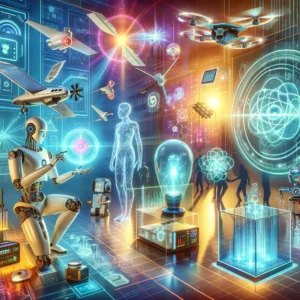Why Microchips Are the Heart of Modern Technology

Why Microchips Are the Heart of Modern Technology.
Discover why microchips are vital to modern technology, their applications, and how they drive innovation in industries from healthcare to AI. Learn about their impact and future trends.
Microchips, often referred to as integrated circuits or semiconductors, are the tiny, powerful devices that drive almost every aspect of modern life. From smartphones and laptops to medical devices and cars, microchips are indispensable. But why are they considered the “heart” of modern technology? This article explores their importance, how they work, and their role in shaping the future.
—
What Are Microchips?
A microchip is a small, flat piece of silicon embedded with a network of electronic circuits. These circuits enable the processing and storage of information. Invented in the late 20th century, microchips revolutionized technology by replacing bulky vacuum tubes and mechanical systems.
—
The Core Functions of Microchips
1. Data Processing
Microchips are responsible for processing data at incredible speeds, making them essential in computing, telecommunications, and artificial intelligence.
2. Control and Automation
They control various functions in machines, from adjusting the temperature in smart thermostats to managing engine performance in vehicles.
READ ALSO: How VR Is Being Used in Training and Education.
3. Data Storage
Memory chips store data, ranging from simple instructions to vast amounts of digital information, ensuring seamless operations in devices.
4. Connectivity
Chips enable devices to connect and communicate with each other, forming the backbone of the Internet of Things (IoT).
—
Why Microchips Are Crucial in Modern Technology
1. Miniaturization of Devices
The compact size of microchips has enabled the development of smaller, more portable devices without compromising functionality.
2. Efficiency and Speed
Advanced microchips enhance the performance and speed of devices, making real-time computing and multitasking possible.
3. Energy Savings
Modern chips are designed to consume less power, contributing to energy efficiency and sustainability.
4. Enabling Innovation
Microchips are central to breakthroughs in AI, robotics, and space exploration, driving technological progress.
—
Applications of Microchips
1. Consumer Electronics
Devices like smartphones, tablets, and gaming consoles rely on microchips for processing power and storage.
2. Healthcare
Microchips power diagnostic tools, wearable health devices, and even implantable technologies like pacemakers.
3. Automotive Industry
Advanced driver-assistance systems (ADAS), electric vehicles, and autonomous cars heavily depend on microchips.
4. Industrial Automation
Factories use chips in robotics, sensors, and controllers to enhance productivity and precision.
5. Communication Systems
From 5G networks to satellite communications, microchips enable faster and more reliable connections.
—
The Science Behind Microchips
Microchips are created using semiconductor materials like silicon. The manufacturing process involves:
1. Design: Engineers design circuits using computer-aided tools.
2. Fabrication: Chips are built layer by layer on silicon wafers using photolithography.
3. Testing: Finished chips are rigorously tested for performance and reliability.
—
Challenges in the Microchip Industry
1. Global Shortages
Recent supply chain disruptions have highlighted the vulnerability of chip production.
2. High Costs
Manufacturing microchips requires substantial investment in specialized facilities and equipment.
3. Technological Complexity
The demand for smaller, faster, and more efficient chips increases the complexity of design and production.
4. Environmental Impact
Chip manufacturing consumes significant energy and water resources, raising concerns about sustainability.
—
The Future of Microchips
1. Quantum Computing
Microchips are evolving to handle quantum bits, promising unprecedented computing power.
2. AI Integration
AI-optimized chips are becoming essential for machine learning and data analysis.
3. Flexible Electronics
Future chips may be embedded in flexible materials, enabling wearable tech and implantable devices.
4. Sustainability
Researchers are exploring eco-friendly materials and processes to reduce the environmental impact of chip production.
—
How Microchips Impact Our Daily Lives
Smart Homes
Microchips power smart devices like assistants, lights, and security systems.
Entertainment
They enhance gaming, streaming, and virtual reality experiences.
Transportation
Advanced chips in navigation systems and electric vehicles make travel safer and more efficient.
—
How to Support Microchip Sustainability
1. Recycle Electronics
Properly dispose of old devices to recover valuable materials.
2. Opt for Energy-Efficient Devices
Choose electronics with energy-saving certifications to reduce power consumption.
3. Support Research
Advocate for investments in sustainable chip technologies.
—
Conclusion
Microchips are more than just tiny pieces of silicon; they are the lifeblood of modern technology, enabling progress and innovation across industries. As the world becomes increasingly digital, the role of microchips will only grow, shaping a smarter, more connected future.





